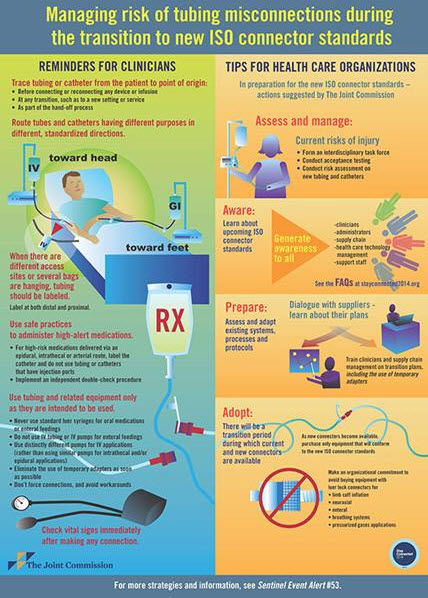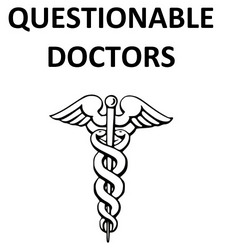How can hospital and health care providers mitigate the increased risk of medical malpractice related to tubing misconnections during the transition to new ISO connecting standards?
 Tubing misconnection error is medical malpractice mostly caused by nursing or hospital negligence that can result in severe personal injury or death of the patient. Misconnections errors have a high risk to happen not only because most patients checking into a hospital are likely to receive at least an IV but also because tubes with different functions can too easily be connected together. Gardiner Harris from the New York Times raised the alarm on this problem in 2010 in the article “U.S. Inaction Lets Look-Alike Tubes Kill Patients”.
Tubing misconnection error is medical malpractice mostly caused by nursing or hospital negligence that can result in severe personal injury or death of the patient. Misconnections errors have a high risk to happen not only because most patients checking into a hospital are likely to receive at least an IV but also because tubes with different functions can too easily be connected together. Gardiner Harris from the New York Times raised the alarm on this problem in 2010 in the article “U.S. Inaction Lets Look-Alike Tubes Kill Patients”.
To address this issue and prevent these types of medical errors, tubing connector standards have recently been developed through a collaboration of the International Organization for Standardization (ISO), the Association for the Advancement of Medical Instrumentation (AAMI), clinicians, manufacturers and regulators, including the U.S. Food and Drug Administration (FDA).
New connectors are going to start to reach the market during the fourth quarter of 2014 and the transition phase is expected to continue through 2015.
 New York Personal Injury Attorneys Blog
New York Personal Injury Attorneys Blog


 The device called tampostat, costs only $1.50 to produce. It allows the condom to be securely introduced into the uterus and filled with an amount of saline appropriate to the size of the uterus.
The device called tampostat, costs only $1.50 to produce. It allows the condom to be securely introduced into the uterus and filled with an amount of saline appropriate to the size of the uterus.
